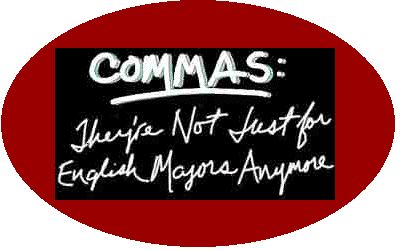
|
|
Getting Started
|
Here's
the first key idea:
Learn to
justify each comma
you use.
Everything
in
this site is based on this principle. The approach is
two-part:
First, during the draft
stage, read
your sentences aloud, or at least slowly enough so that an audience
could
understand you easily. As you read, place commas where you think they
go
- trust your instincts. Admit it - that's probably what you do now,
anyway.
And don't think you'll avoid comma errors by avoiding using commas
altogether.
For this exercise, go ahead and put the commas where you "hear" them.
The second part - and
this is the part we're here to learn - is that you go back while
proofreading and JUSTIFY every
single comma you used, according to rules you know (or are about to
learn).
If you know the
reasons to use commas and can't think of a reason a comma SHOULD be
there, then it's probably best to
leave it out.
This
site's official disclaimer!:
This approach will
not cover every single situation, but it should help you in most
cases.
|
This
tutorial will
work best if you have the printable
handout in front of you. If you have one, follow
along. If not, print it out (if possible) and come back here.
|
|
|
|
|
|
|
|
IE: Introductory
Elements
|
|
|
2IC: Two
Independent Clauses
|
|
|
CA: Compound or
Coordinate Adjectives
|
NRE:
Non-Restrictive Elements
|
|
|
|
|
|
|
|
|
|
|
|
|
|
|
|